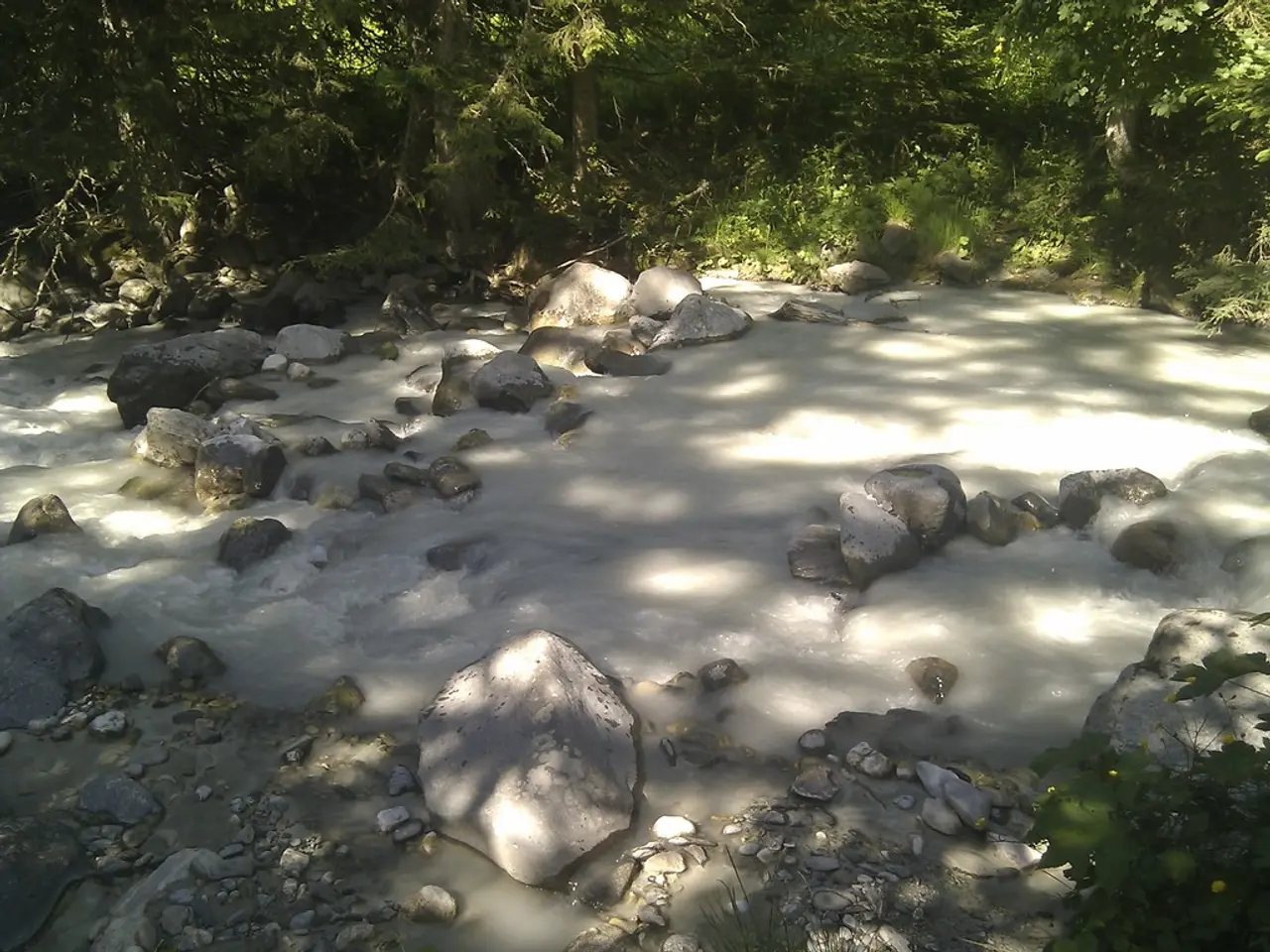Teenager encountering devastating burns at Yellowstone National Park due to a sudden collapse into a boiling thermal pond.
In Yellowstone National Park, a 17-year-old visitor recently suffered severe burns to his foot and ankle after stepping off a designated trail and breaking through a thin, fragile crust near Lone Star Geyser [1][2][3][4][5]. This incident, reported on July 28, 2025, marks the first thermal injury at Yellowstone this year and underscores the ongoing risks of venturing off designated paths in thermal areas.
The thin, fragile crusts that cover geothermal areas at Yellowstone are weakened by hot water and steam from below, making them prone to breaking. When this happens, individuals can fall into or be scalded by extremely hot water or mud beneath.
Sadly, thermal injuries are not uncommon in Yellowstone. Since the late 1800s, around 20 people have died from burns sustained after deliberately entering or accidentally falling into hot springs [1][2]. The park's geothermal features can be deceptively dangerous, as it is impossible to tell which pools are deadly hot just by looking at them.
The water at Yellowstone can be extremely acidic due to the presence of substances like hydrogen sulfide and carbon dioxide. Some microbes in the park can convert these substances into other chemicals, such as sulfuric acid, further increasing the risk of injury [1][2].
To prevent such accidents, park authorities strongly recommend that visitors always remain on boardwalks and marked trails, keep children closely supervised, and strictly avoid touching or entering hot springs or runoff. Other safety measures include not throwing objects into thermal features, being aware of toxic gases, and leaving immediately if feeling unwell. Pets are also banned from thermal areas to avoid increased risk [1][2].
Lone Star Geyser, the site of the recent incident, is a 12-foot-tall cone formation southeast of Old Faithful. The geyser erupts jets of steam reaching 45 feet high [6]. Despite its beauty, the geyser basin, like many thermal areas in Yellowstone, is fraught with hidden dangers. Visitors are urged to heed warnings and stay on trails to ensure a safe and enjoyable visit to the park.
Emergency medical staff provided first aid to the injured hiker, and the incident is now under investigation [1][2]. The hope is that this unfortunate event will serve as a reminder to all visitors to respect the park's delicate thermal features and adhere to safety guidelines.
References:
- National Park Service: Thermal Injuries
- Yellowstone National Park: Safety Tips
- Yellowstone National Park: Lone Star Geyser
- CNN: Teen Burned in Yellowstone Thermal Injury
- Associated Press: Teen Suffers Thermal Burns at Yellowstone
- National Geographic: Lone Star Geyser
- While exploring Yellowstone National Park, it's essential to remember that scientific studies show the park's geothermal features can be deceptively dangerous due to hot water, acidic contents, and toxic gases.
- In the realm of health-and-wellness, thermal injuries from venturing off designated trails in thermal areas, as demonstrated by the recent incident at Lone Star Geyser, can lead to severe burns or even fatalities.
- To reduce the risk of accidents associated with fitness-and-exercise at Yellowstone, park authorities advise adhering to safety guidelines such as staying on designated trails, avoiding touching or entering hot springs, and leaving immediately if feeling unwell due to toxic gases.
- While enjoying the sports of hiking and sightseeing in Yellowstone, visitors also need to be aware of environmental-science factors like climate-change effects on the park's geothermal areas, which can make thin, fragile crusts weaker and more prone to breaking.







